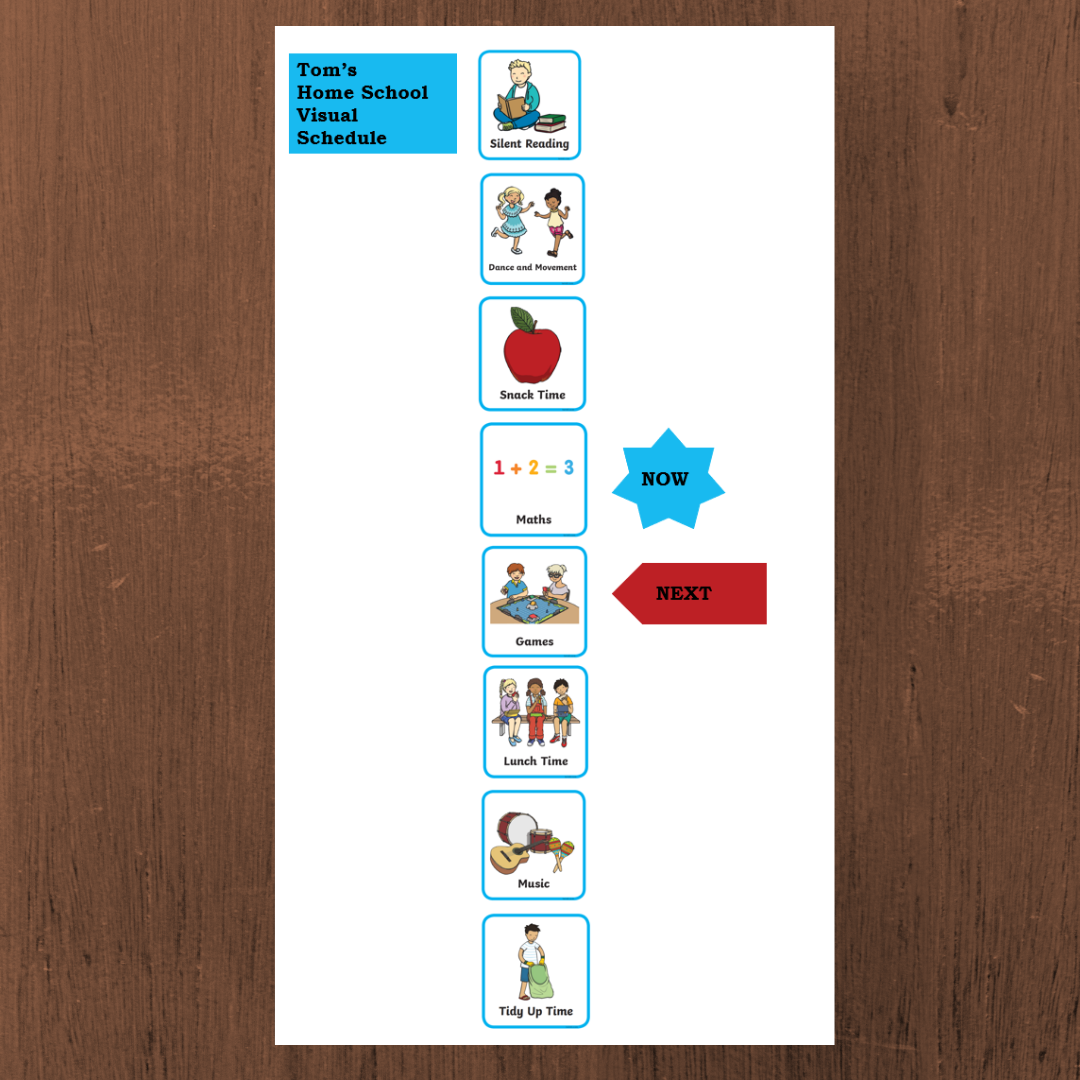If home-based learning is new for you and your child, then a visual schedule may be of benefit.
A visual schedule uses words, pictures or symbols to represent of a series of activities.
It communicates the overall flow of the day or can be used to break down tasks into more manageable steps.
Visual schedules provide prediction, help establish routines, moderate anxiety, foster independence and teach responsibility.
Task completion and goals can be achieved when plans and expectations are clearly laid out with the avoidance of power struggles.
How to Make a Visual Schedule
- Choose how you are going to display your visual schedule. For example, on a board or a coloured sheet of cardboard and how you will attach each visual eg velco or fasteners.
- Make a list of home-based learning activities.
- Choose a visual to represent each activity. This might be a photo, an illustration or something you are able to download. Visit twinkl for free download of printable symbols.
- If possible, laminate the visuals so they can be repeatedly used.
- Add the daily activities to your chosen board in the correct series of activity.
Children may choose to remove each activity after completion to support a smoother task transition and instil a sense of accomplishment.
We suggest for home-based learning, parents and children review the visual schedule each morning as activities will differ each day.
Useful links to help you create visual schedules:


